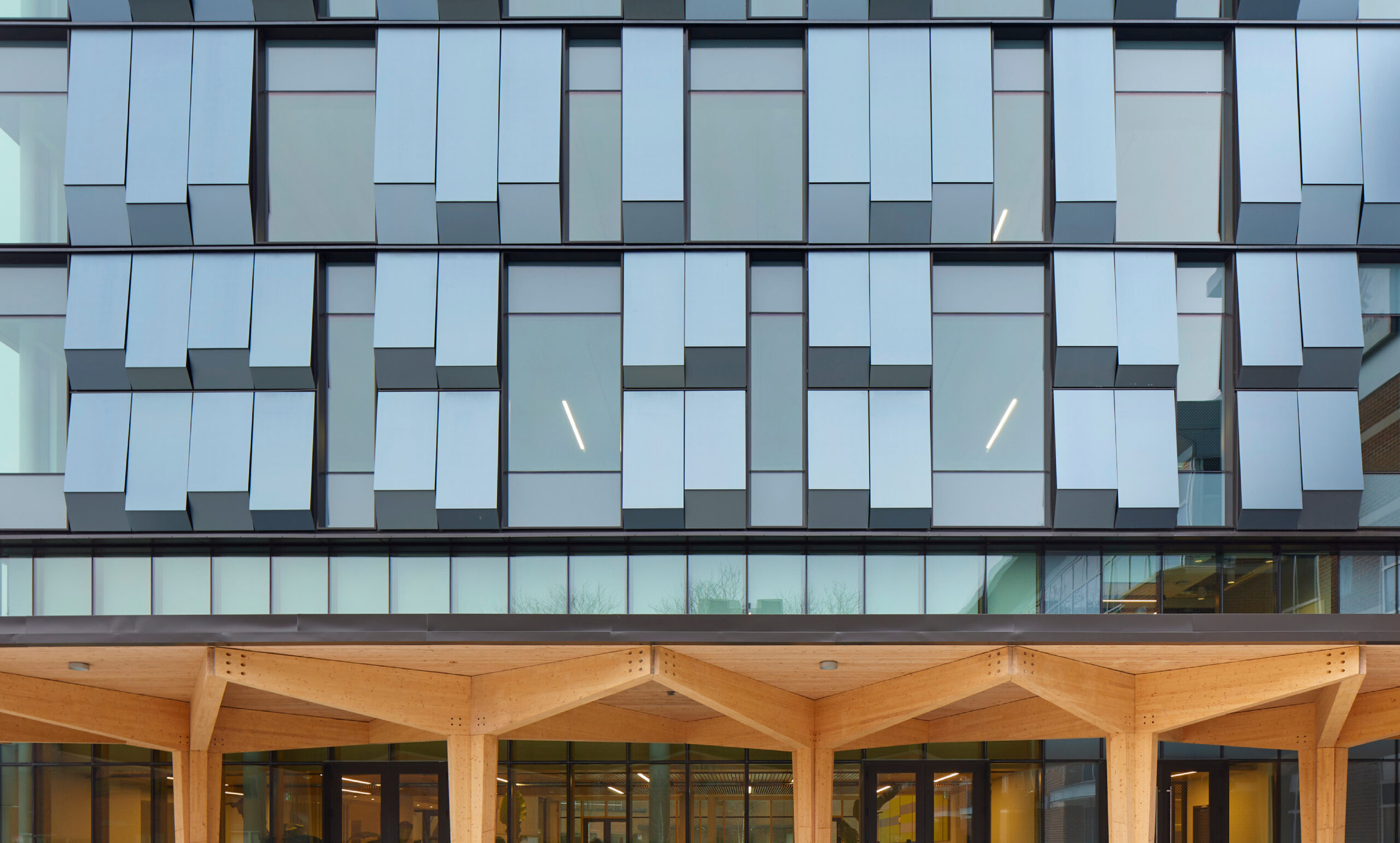Novae Res Urbis: Designing for Innovation at Fanshawe College

For more information, please contact:
Andrea Chin, Communications Director
Email: [email protected]
Sydney Browne, Principal
Email: [email protected]
Fanshawe College Innovation Village is featured in an article by Lana Hall in Novae Res Urbis.
As post-secondary student learning needs continue to evolve, a new college innovation facility in London, Ontario has been designed to focus on sustainability, with Indigenous-inspired design elements and spaces that encourage collaboration and experimentation with technology.
Designed by Diamond Schmitt, the Innovation Village is a 126,828-square-foot facility originally proposed to expand the campus's core, offering facilities for cross-disciplinary programs and industry/ education partnerships, including startup incubation zones, reflecting the college's academic approach, which focuses heavily on experiential learning.
"Students have many more opportunities in this building to develop their own content, to share themselves within groups, but also to share in very direct connections with local industries, as well,” says Diamond Schmitt principal Sydney Browne.
One of lnnovation Village's central features is the Canada Life Village Square, a full height multi-purpose space, positioned at the crossroads of the campus's major corridors. Surrounded by interior glazing, the Square has multiple access points that open towards the building's interior. This transparency establishes visual connections throughout, and offers students and faculty a glimpse into the activities taking place, encouraging spontaneous participation and engagement, says Browne.
The design team also prioritized Indigenous engagement in the design process. This engagement was led by Fanshawe College Indigenous education and development advisor Guy Williams, from the Nlaka'pamux Nation. Through this collaboration, a new library was designed, which will include the Kalihwíy̲o̲ Circle [from the Oneida (OnAyota'a:ka) language, means 'good message'], a space for Indigenous workshops, exhibitions and smudging ceremonies.
"The college has worked really deliberately over recent years to find ways to make their programs, their spaces, their instructors more accessible to Indigenous learners, and that was one of the strongest parts of the brief that they brought to us:' Browne says of the Indigenous design elements.
Fanshawe College was also open to a suggestion from Diamond Schmitt to wrap the new building in a custom Building Integrated Photovoltaic (BIPV) cladding system, which uses a nanotechnology surface treatment allowing for a coloured surface, as opposed to the standard black solar panel. The BIPV system has minimal reflectance, optimizing solar transmittance and energy capture.
"The college was interested in doing things differently in many ways: inside through their teaching spaces, outside through the connection of interior and exterior spaces, and also through their willingness to consider the photovoltaic cladding, which is something that is really quite new and untested,” says Browne.
Read the full article here.
Posted with permission of the publisher of NRU Publishing Inc. Original article first appeared in Novae Res Urbis GTHA, Vol. 28, No. 8, Wednesday, February 19, 2025.